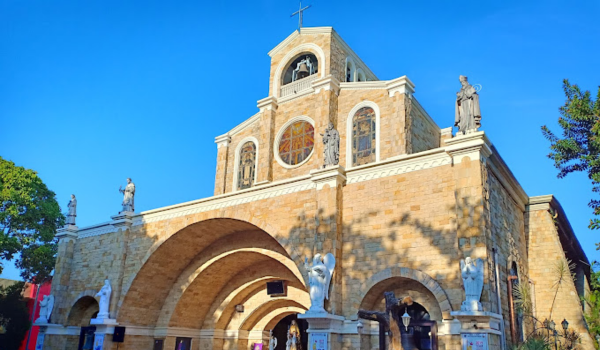
In a land area of 7,205.92 square kilometers, the diocesan territory covers the entire civil province of Zamboanga del Norte and the cities of Dipolog and Dapitan.
As of year end 2016 the total population of the diocese is 974,132 of which 58.40 percent are Catholics or 568,973.
The main dialect is Cebuano/Visayan. Other dialects include Subanon and Muslim. English and Filipino (Tagalog) are also spoken. The original and native Subanen dialect lives on, especially in the highlands.
Suffragan of Ozamis
Created: July 31, 1967
Erected: August 1967
Comprises the entire civil Province of Zamboanga del Norte and the Cities of Dipolog and Dapitan. Titular: Patron Saint: Our Lady of the Most Holy Rosary Secondary Patron: Saint Vincent Ferrer
Carved out of the Archdiocese of Zamboanga, Pope Paul VI created the Diocese of Dipolog by virtue of the Apostolic Letter "Quantum Prosit" on July 3, 1967.
The territorial jurisdiction of the diocese covers the civil province of Zamboanga del Norte, including the cities of Dipolog and Dapitan, a land area of 7,205.94 square kilometers. This province covers the western border of Mindanao facing the Sulu Sea.
The Society of Jesus was tasked to preach the good news in this part of Mindanao when they came to the Philippines in 1581. When the country was divided among four major religious congregations in 1598, the Jesuits were given the Diocese of Cebu which covered the Visayas and Mindanao their area of responsibility.
The Jesuits came as chaplains of the Spanish naval force out to explore, conquer and colonize more tribes. Pascual de Acuña started the Jesuit mission in Dapitan. The squadron of Juan Juarez Gallinato, of which he was the chaplain, defeated the Maguindanao muslims in a ferocious battle in 1609.
Other Jesuit naval chaplains followed when Dapitan became a regular port call for Spanish squadrons on patrol. In 1629 the Society of Jesus sent Pedro Gutierez, a Mexican Jesuit. He established a permanent Jesuit mission residence in the area two years later where he became the first superior.
As a missionary residence, Dapitan was at first dependent on Cebu. It was placed under the jurisdiction of Zamboanga residence in 1639. It was transferred anew to Loboc (Bohol) residence in 1643. Finally, in 1645, it became independent with its jurisdiction extending from Iligan to Sindangan Bay.
The missionary zeal of the Jesuits was spent particularly on the conversion of the Subanen known to be the original inhabitants of the peninsula. By 1969, churches were built in Dapitan, Iligan, Layuan, Ylaya, Dipolog, Dicayo, Duhinob, Manukan, Sian, Sindangan, Mucas and Quipit with a total number of 3,478 Christian residents.
During the 18th century the endearing and questionable loyalty to the Pope and Rome, as well as their international character, made the Jesuit missionaries a threat to the Bourbons and their plans. This resulted to the banishment of the Jesuits from all lands under the domination of the Bourbon monarchs in 1768. They were expelled from the Philippines soon after. The Order of Augustinian Recollects took over their jurisdiction, including the Dapitan mission in 1770.
In 1796, during the administration of the Recollects, the Katipunan parish also known as Lubungan was established. In 1865 the jurisdiction of Dapitan and the whole of Mindanao was transferred from the ecclesial province of Cebu to the newly created diocese of Jaro.
The Royal Decree of 1852 allowed the Society of Jesus back to the Spanish lands. They returned to the Philippines and resumed their old Mindanao mission. In 1870, they took possession of Dapitan.
Dipolog was under Katipunan until it was established as a parish in 1896. Jose Vilaclara became its first parish priest. As preachers, builders and educators, the Jesuits served Dipolog until 1946 when they passed the stewardship to Epifanio Baleares, a Filipino diocesan clergy.
Originally the Diocese of Dipolog was a suffragan of the Archdiocese of Zamboanga. When the diocese of Ozamiz was elevated to an archdiocese in 1983, it took the Diocese of Dipolog as one of its suffragans.
The principal patroness of the diocese is Our Lady of the Most Holy Rosary, with St. Vincent Ferrer as its secondary patron.
The Most Reverend Felix Zafra, D.D. was appointed First Bishop of Dipolog. He took canonical possession of the diocese on Oct. 2, 1967. In the process, basic ecclesial structures were set in place. The number of parishes increased to 28.
The Maryknoll and Pontifical Institute for Foreign Missions (PIME) Fathers came in the 1970's. PIME took place of the Claretians in the South while the Redemptorist did mission work in the area. Aside from the Religious of the Virgin Mary (RVM) Sisters who had worked in Dipolog since 1892, the Holy Spirit Sisters and the Blessed Virgin Missionaries of Carmel began to serve the diocese. In 1982, the Sacri-Cordian Sisters were organized by Bishop Zafra. Three years later, he gathered some young men to form them into Brothers of the Sacred Heart of Jesus and the Immaculate Heart of Mary.
More significant to the diocese was the increasing number of Filipino diocesan priests ordained. The founding of two seminaries capped the remarkable growth of the diocesan clergy. In 1979 Bishop Zafra co-founded St. Mary's Theologate in Ozamiz City for theology students. The following year, Cor Jesu Seminary was established in Dipolog for college seminarians.
On May 27, 1987 the Most Reverend Jose R. Manguiran, D.D. became the Second Bishop of Dipolog, and remains the bishop of the diocese to date.
In 2000, the literacy rate (simple literacy) is 86.32 percent.